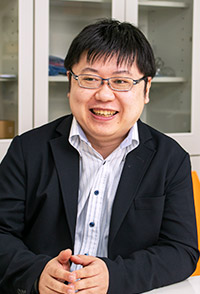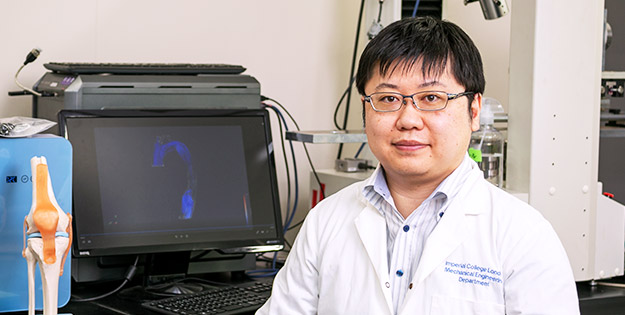Ryo Takeda Asst. Prof.
Asst. Prof.
Ryo Takeda
Faculty
Graduate School/Faculty of Engineering Faculty of Engineering Mechanical and Aerospace Engineering Mechanics and Materials
Research field
- Informatics / Mechanics and mechatronics / Biomechanics
- Informatics / Robotics and intelligent systems / Biomechanics

Major research field
Mechanical engineering is a research field that studies the basics of mechanical systems. The field includes various systems such as automobiles, robotics, manufacturing and advances materials. However, my particular research focus is on biomechanics, which is a study of living organisms from a mechanical aspect. My research is targeted at themes related to medical applications. One example is my research on studying the stability of human knee joints. If the ligaments of the knee joint rupture, the knee becomes unstable, and may lead to the development of knee joint osteoarthritis (OA). Currently, I am developing a testing platform to evaluate knee ligament treatment methods, such as ligament reconstruction procedures, as well as a simulator that helps identify potential motions and postures prone to ligament rupture. In addition, another topic of study targets the fluid dynamics of an aortic dissection, an abrupt tear within the aorta, which can be fatal. Complex numerical calculations using computational fluid dynamics (CFD), are implemented to predict locations where these aortic dissections are likely to occur. My overall objective is to develop technologies, from an engineering standpoint, that may lead to improving the quality of life (QOL).
Expectations for students planning to participate in the PARE program
PARE, an abbreviation that stands for Population, Activity, Resource and Environment, is a superb program aimed at providing opportunities for students to consider issues relevant to these four areas. Since it is difficult to find solutions from just a single viewpoint, we must collect expertise and knowledge from interdisciplinary fields to address the issues we face. Moreover, because individually we cannot realistically handle everything on our own, we must cooperate with people from different countries and disciplines. I hope this program will be instrumental in producing large numbers of human resources capable of eagerly tackling problems associated with PARE.
Your most memorable school event thus far
The core of the PARE program is the network or ties within the participants. The problems associated with PARE are sophisticated and complex, thus posing a great challenge for students. Since there are many tasks that cannot be accomplished by a single individual, it is necessary for students to collaborate with fellow group members over a long period of time. Over the course of such collaborations, students are able to successfully forge strong bonds. These bonds continue even after having completed the PARE program and graduating from individual consortium universities. I believe that the PARE program, in which so many students come together to overcome barriers of different majors, cultural backgrounds, languages and nationalities to foster a strong bond, is truly wonderful.
Expectations for expansion of the program going forward
I expect new seeds to be unearthed based on the bonds developed between program participants, as well as on the problem awareness and expertise acquired through participation in the PARE program. If more people begin to take interest in issues related to PARE topics, solutions for breaking away from the negative cycle of problems associated with PARE will become feasible. I truly look forward to seeing further development of the PARE program in the future.

